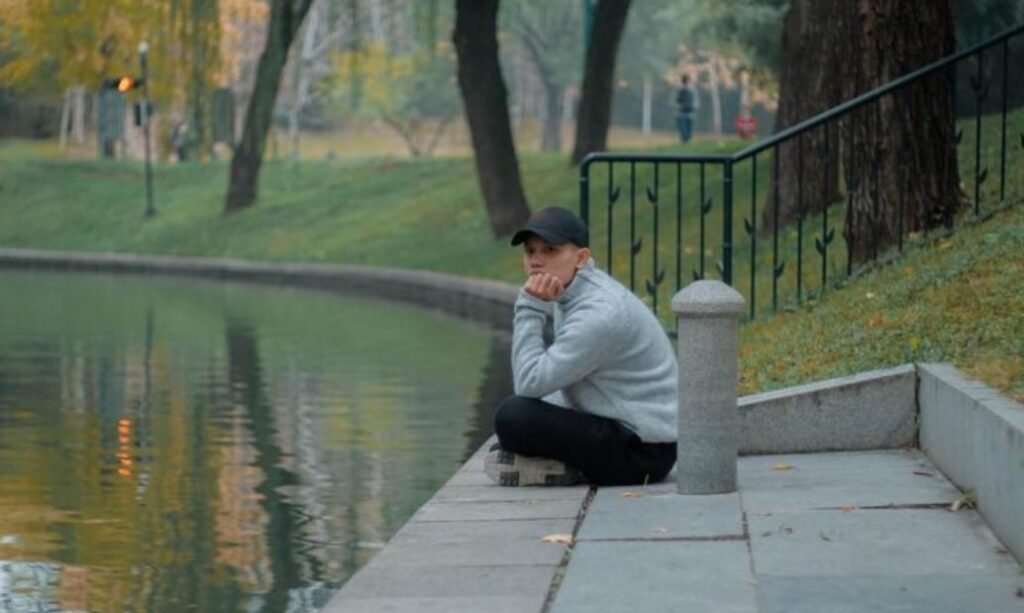
Some people experience loss as a gradually healing bruise. Others experience daily pain from the scar. That eerie persistence is captured by Prolonged Grief Disorder, or PGD. It is a state in which mourning refuses to stop, keeping the person trapped in a cycle of longing and incredulity, rather than an exaggeration of emotion.
It is referred to by clinicians as “stuck grief” when the healing process’s natural rhythm stops. Grief usually subsides as the mind adjusts, but in PGD, the emotional scar doesn’t close. Columbia University’s Dr. Katherine Shear describes it as “a wound that keeps bleeding.” For those who live each day as though their loss occurred yesterday, her description seems painfully realistic.
| Aspect | Description |
|---|---|
| Definition | Prolonged Grief Disorder (PGD) – a clinically recognized condition where mourning persists and interferes with daily life. |
| Recognition | Listed in DSM-5-TR and ICD-11 as a mental health disorder. |
| Symptoms | Persistent yearning, disbelief, emotional pain, and disconnection lasting beyond 12 months. |
| High-Risk Factors | Sudden deaths, loss of a spouse or child, previous trauma, or social isolation. |
| Treatments | Prolonged Grief Therapy, Cognitive Behavioral Therapy, and grief support groups. |
| Societal Impact | Emotional paralysis, disrupted relationships, and physical illness linked to chronic grief. |
| Reference | Psychiatry.org – American Psychiatric Association |
PGD is officially defined by the DSM-5-TR as adult grief that lasts longer than twelve months and interferes with relationships, purpose, and emotional equilibrium. The symptoms—persistent longing, intrusive memories, emotional numbness, and difficulty reintegrating into daily life—are strikingly similar. The duration is shortened to six months for kids and teenagers, but the intensity can be just as draining.
According to research, this disorder affects roughly 7% of people who have experienced a loss. Considering how many millions of people lose loved ones every year, the percentage may not seem like much. The inability of the mind to reconcile shock with reality is especially prevalent following abrupt or traumatic deaths, such as accidents, suicides, or violent losses.
Prolonged grief turned into a silent epidemic during the pandemic. Many people were deprived of closure because there were no farewells, funerals, or physical contact. Incapable of sharing comforting rituals or hugs, grieving families were forced to watch farewells on screens. These lost moments exacerbated trauma, transforming everyday grief into something more permanent and more difficult to recover from.
Dr. Naomi Simon, a psychiatrist at NYU, refers to extended grief as “reliving loss on a loop.” It feels like the first day after death every morning—an echo that never goes away. Nonetheless, she points out that realizing it as a medical condition empowers rather than limits. Treatment, empathy, and healing are made possible by recognition.
PGD-based therapies are exceptionally successful. Dr. Shear created Prolonged Grief Therapy (PGT), which blends behavioral activation, exposure, and storytelling. The objective is to assist patients in coexisting with their memories, not to erase them. Individuals work on going back to locations they have avoided, recounting the tale of their loss, and progressively finding purpose in their lives again.
Other therapeutic approaches, like Meaning Reconstruction Therapy and Cognitive Behavioral Therapy (CBT), assist people in rewriting their story of loss. The person starts to transition from pure suffering to purposeful remembrance by incorporating the deceased into a new version of life. It’s about “moving forward,” not “moving on,” a distinction that strikes a deep chord with people who feel torn between the past and the future.
Celebrities have subtly contributed to raising awareness of this type of loss. Michelle Williams’ unwavering sadness over Heath Ledger or Sheryl Sandberg’s thoughts following her husband’s unexpected death gave millions of people the confidence to grieve for a longer period of time. People were reminded by Vanessa Bryant’s ongoing homages to Kobe and Gianna that true love never dies—rather, it changes. These anecdotes humanize what psychiatry now quantifies: the length of pain is determined by the degree of connection.
Chronic grief leaves physiological traces all over the body. Long-term mourning can raise stress hormones, cause inflammation, and weaken immunity, according to Harvard Medicine research. Emotional release is challenging because the brain’s memory circuits are still abnormally active. Physical tiredness, restless nights, and even tightness in the chest are frequently reported. Grief is ingrained in both the mind and the body.
The way that prolonged grief is expressed is also influenced by gender. While men tend to internalize their grief and cover it up with work or withdrawal, women are more likely to ask for help. Many experts contend that men’s access to emotional recovery has been severely hampered by cultural norms surrounding masculinity. They argue that normalizing vulnerability is not a luxury but a necessity for public health.
In a significant way, technology has changed mourning. People can freely express their ongoing suffering through online memorials, anniversary posts, and digital grief communities. They have evolved into a contemporary kind of group remembrance—a secure environment that encourages emotional candor. They also lessen stigma by ending the long-standing taboo around grief, which enables people to empathize with others who have experienced similar losses.
Access to mental health services is still not equal, though. Prolonged grief therapy is expensive, and PGD is not yet recognized as a diagnosable condition by many insurance companies. This gap is now partially filled by nonprofits and support groups, which provide peer-led sessions that can be especially consoling. These areas serve as a reminder to people that they are human and not broken, even though they are enduring a very trying time.
The way that people talk about grief is slowly changing. Recognizing that recovery takes time, some countries are experimenting with “bereavement leave” policies. A long-overdue cultural shift has occurred. Grief leave recognizes that emotional healing is just as important as physical recovery and adjustment, much like maternity leave does.
Even in the agony of protracted grief, there is beauty because it speaks to a deeply ingrained love. “Prolonged grief is love with nowhere to go,” as Cornell University’s Dr. Holly Prigerson famously remarked. Comprehending that idea aids in changing the way society perceives healing—it involves refocusing attachment toward life rather than destroying it.
Long-term grief serves as a reminder that grieving is an act of remembrance rather than weakness. Forgetting does not equate to healing. It entails accepting the memory and gently educating the heart to bear loss and love side by side. Even chronic grief can be softened—not erased—by compassion, therapy, and candid discussion, transforming suffering into a lasting bond that sustains love.
